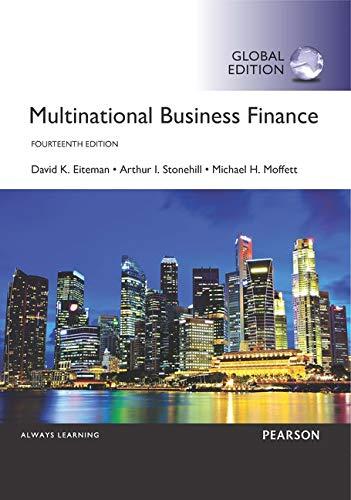Argentinas default on its foreign currency denominated sovereign debt in 2001 had proved to be a never-ending
Question:
Argentina’s default on its foreign currency denominated sovereign debt in 2001 had proved to be a never-ending nightmare. Now, in June 2014, 13 years after the default, the U.S. Supreme Court had confirmed a lower-court ruling, which would force Argentina to consider defaulting on its international debt obligations once again. But the story was a tangled one, which included investors all over the world, international financial law, courts in New York State and the European Union, and a battle between hedge funds and so-called vulture funds—funds that purchased distressed sovereign debt at low prices and then pursued full repayment through litigation. Time was running out.
The Default Argentina’s currency and economy had nearly collapsed in 1999. The rising sovereign debt obligations of the Argentine government, debt denominated in U.S. dollars and European euros, could not be serviced by the faltering economy.
In late December 2001, Argentina officially defaulted on its foreign debt: $81.8 billion in private debt, $6.3 billion to the Paris Club; and $9.5 billion to the International Monetary Fund (IMF).
The debt had been originally issued in 1994 and registered under New York State governing law. New York law was specifically chosen because Argentina had become known as a serial defaulter. The bonds were issued under a specific structure, a Fiscal Agency Agreement (hence FAA Bonds), which would require all debt service be made through escrow accounts in New York.
The normal process following default is for the debtor to enter into talks with its creditors to restructure its debt obligations. Reaching consensus on sovereign debt restructuring, however, may be difficult because there is no international statutory regime for sovereign default similar to domestic bankruptcy codes. This leaves three options: (1) a collective solution; or (2) a voluntary exchange of old debt for restructured obligations; or (3)
litigation.
The first option, the collective solution, is usually accomplished via the use of collective action clauses (CCAs)
that impose similar reorganization terms on all creditors once a specific percentage of creditors, 75% to 90%, have agreed to the restructuring terms. These CCAs prevent a small number of creditors—holdouts—from blocking restructuring. Unfortunately, the Argentine bonds did not have collective action clauses.
Given the absence of a collective action clause, Argentina was left with the second option, a voluntary exchange of old debt for new debt. Debt restructuring itself normally includes four key elements: (1) a reduction in the principal of the obligation; (2) a reduction in the interest rate; (3) an extension of the obligation’s maturity; and (4)
capitalization of missed interest payments. The total result is a reduction in the net present value of the debt obligation, the so-called haircut, which may range anywhere from 30% to 70%.
A second common clause included within sovereign debt, the pari passu clause (Latin for “equal steps,” and is read as “equal among equals”), calls for all creditors to be treated equally, assuring that private or individual deals are not made in preference to some creditors over others.
Argentina’s sovereign debt did include a pari passu clause (Argentine Fiscal Agency Agreement (1994), Clause 1©):
“The Securities will constitute [. . .] direct, unconditional, unsecured.....
Mini-Case Questions 1. What is the role played by legal clauses such as the collective action clause and the pari passu clause in sovereign debt issuances?
2. What is the difference between a typical hedge fund investing in sovereign debt (even distressed sovereign debt) and the so-called vulture funds?
3. If you were appointed a mediator by the court to find a solution, what options or alternatives would you suggest for resolving the crisis?
Step by Step Answer:

Multinational Business Finance
ISBN: 9781292097879
14th Global Edition
Authors: David Eiteman, Arthur Stonehill, Michael Moffett





